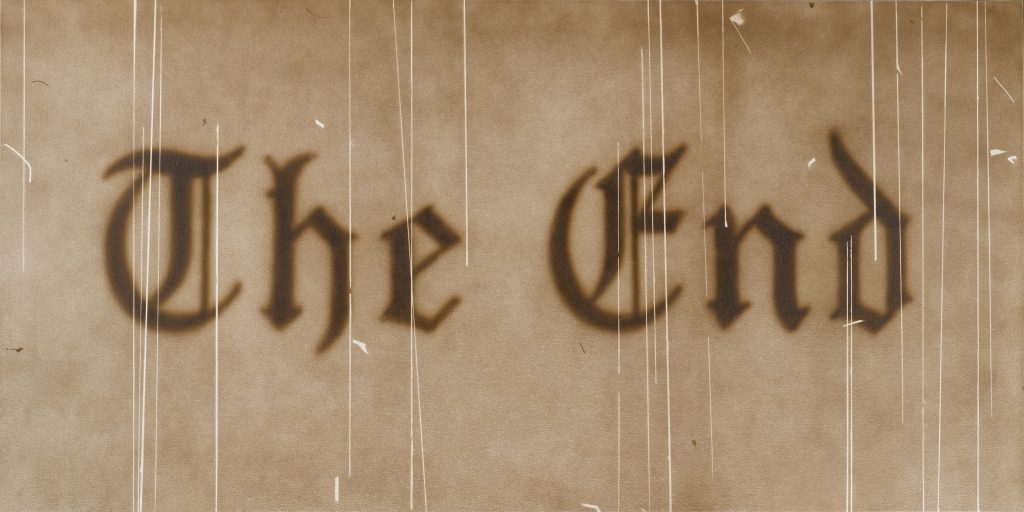Scratches on the Film (work of art)
Artwork Info
Key Ideas
- In Scratches on the Film, Ed Ruscha (roo-shay) pays tribute to old Hollywood cinema by painting the words The End in Gothic lettering and making the canvas look like a piece of film.
- Ruscha is often associated with the Pop Art movement that began in the 1950s, and he is known for blending art and popular culture. In Scratches on the Film, he references a major part of modern popular culture: the Hollywood film industry.
- The artist is known for incorporating text into his artwork. Some of his works explore the power and meaning of words like ‘Honk and OOF while others directly reference mass media, such as the 20th Century Fox logo, and famous American landmarks like the Hollywood sign.
- The use of text in art dates back to art movements of the early 20th century. Some examples of this are Georges Braque’s Fruit Dish and Glass (1912), Raoul Hausmann’s The Art Critic (1919–20), and René Magritte’s The Treachery of Images (1929).
Learn More
Los Angeles-based artist Edward Ruscha is known for his text-based artworks that combine pop culture, language, and typography. His style is influenced by the 1950s Pop Art movement, which rejected traditional, often elitist approaches to art making and embraced the creation of art for the people. According to the artist, he initially chose to work with text because it wasn’t limited by scale or style. He could display words any way he wanted, easily altering the intended meaning with a specific font, backdrop, or color.
Scratches on the Film is a large acrylic painting that appears to be an old and faded sepia-toned film still featuring the words The End in a bold Gothic font. In keeping with the goals of the Pop Art movement, Ruscha makes a direct reference to Hollywood, a major part of modern pop culture.
tags: communication, time, variation, movie, narrative
Additional Resources
Resources for Teachers:
- Review a writing activity that uses Scratches on the Film as inspiration.
- Read an article about the pop art movement.
- Explore pop art lesson plans from the Andy Warhol Museum.
Resources for Students:
- Watch a video about pop art.
- Watch an interview with the artist to learn more about his work.
- Take a quiz to find out which pop artist you identify with most.

